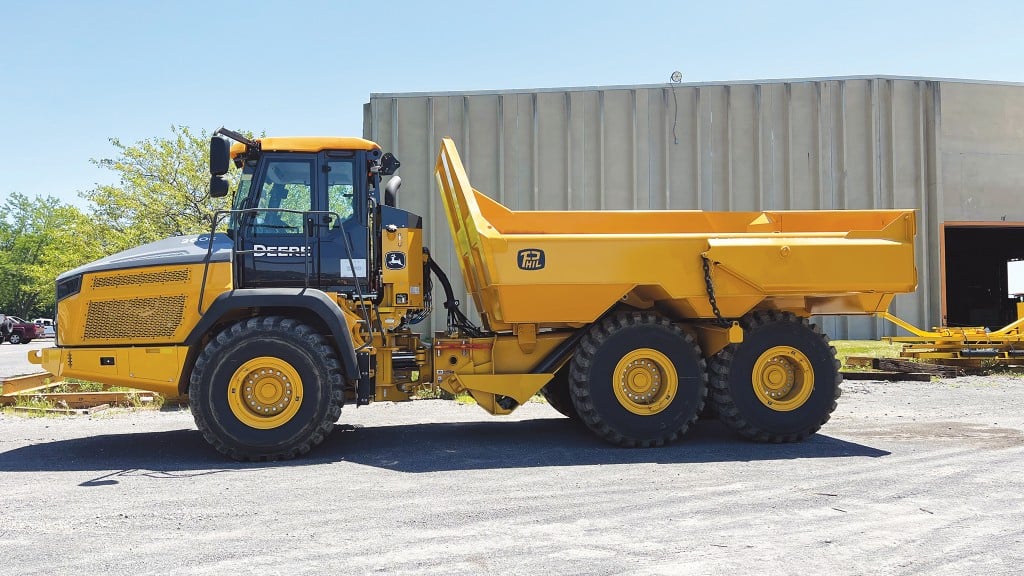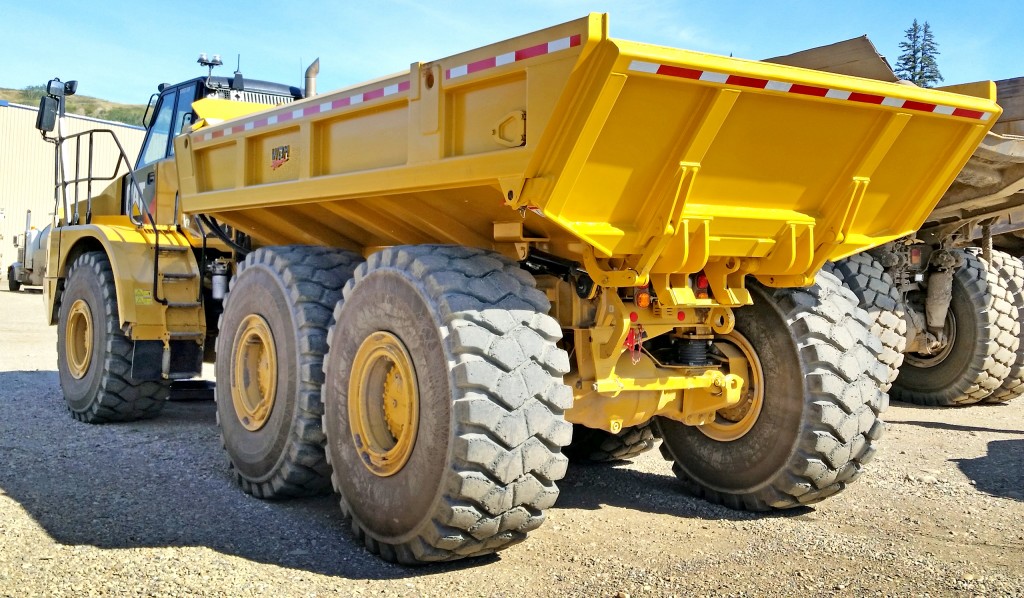
Trucks run around the clock every day of the year in quarries, so it's nearly impossible to pull the nose from the grindstone long enough to provide necessary thorough analysis to optimize their operation. Fortunately, picking the right truck body that is engineered for efficient and profitable aggregate hauling can be made easy.
It might appear that truck bodies don't differ much from one design to another, but take a moment to speak with an operator about the pain points in his or her day and it will be clear that not all bodies are created equal. Each day, operators load and unload countless amounts of aggregate in relatively similar-looking trucks. Company goals might all be the same – increase payload, decrease downtime, and get the best lifespan from the truck – but the outcome in each quarry depends on the equipment used.
High-performance, aggregate-specific truck bodies address three major challenges in the aggregate industry. First, they're engineered for minimal maintenance and a long lifespan, creating the best possible return on investment. Second, they withstand highly abrasive material while minimizing carryback and maintenance. And third, they maximize the truck's full capacity to increase potential profit.
The right truck body optimizes hauling
Trucks have a finite carrying capacity – part of which is the machine weight. When the equipment is perfectly designed, the hauled aggregate consumes the rest of the capacity limit.
High-performance body manufacturers maximize truck-hauling capacity and provide the highest possible payload by considering factors such as height and width restrictions as well as loading equipment. For example, bodies are wider to match up with the loading equipment shovel or bucket, allowing for a large loading target and a quick load rate. Some manufacturers also examine the natural angles of repose, or how materials lay, to maximize payload capacity and reduce material spillage.
Engineers focus on a proprietary process for high-performance bodies that removes unnecessary steel. By doing so, additional features, such as greater width and a more substantial floor bolster system, don't weigh bodies down. Removing any unnecessary weight significantly increases hauling productivity and contributes to a fully utilized capacity. Customizing bodies also aids in productivity by ensuring minimal maintenance and carryback.
Cut the carryback
In an industry where trucks run around the clock 365 days of the year, productivity is the last thing that should be sacrificed. To ensure job productivity stays high, bodies that can handle highly abrasive, sticky material while minimizing carryback become a huge benefit.
Innovative engineering and construction continue with the load-containing portion of high-performance aggregate bodies. Often, the aggregate-and-soil-mixed payload becomes sticky and bridges across the front of bodies, decreasing productivity by eating away at the total capacity until bodies are cleaned. However, uniquely designed bodies repel moisture. Manufacturers design key parts of the bodies, specifically in areas where carryback traditionally begins, reducing the likelihood that material will build up.
Body-side top rails reinforce sides and eliminate the potential for material to build up within the sidewalls, which can impact the truck's overall carrying capacity. The rails are half sections of rounded pipe that tie the inside steel plate to the outside plate at the top and cover the gap between them.
Tapering bodies can also decrease wear and carryback on the sides when appropriate for the application. When bodies are narrower at the front than the back, materials release immediately when dumped and slide straight out without scraping the sides, which virtually eliminates the potential for weighted carryback. This innovative design also allows the extra weight capacity to reinforce other areas of the truck bodies that generally receive the most wear.
Prevent truck body damage
Minimizing servicing downtime is key to increasing productivity. Customizing high-performance bodies to the quarry's specifications increases loading safety and greatly reduces the potential for loading damage by ensuring width is correctly paired with the loading tool. This provides the lowest possible loading height and allows the loading tool to get closer to the floor of bodies, nearly eliminating the chances that loading equipment will damage the sides. The wide bodies, when paired with a tailgate, also provide the truck operator with well-balanced weight distribution. Improved weight distribution benefits the life of truck bodies and tires by eliminating the potential for wearing on specific areas. With the weight distributed equally across all of the tires, it reduces the potential for uneven wear.
Taking berm height into consideration, engineers design the truck bodies so they do not fall below the centre of the wheels, or the height of the berm, at full dump. This ensures ample clearance and helps eliminate tail damage that might occur when dumping into a pile.
Extend truck body life
Bolsters and frame rails provide maximum reinforcement to the sides and floors of bodies. Traditional bodies simply butt-weld bolsters to frame rails, making them vulnerable to wear and tear due to less than optimal structural integrity. Custom bodies with intersecting bolsters and frame rails offer superior support that won't buckle under the immense weight of quarried materials, keeping the payload at maximum capacity.
This enhanced design couples with some of the strongest steel in the world to significantly extend the life of bodies. Within high-performance bodies, steel is used only where it's needed – at the greatest load containing areas. Even in intense environments, after hauling hundreds of thousands of tons to and from quarries, the steel doesn't show signs of wearing thin. In fact, constructing bodies in such a fashion typically increases the life of the trucks by 25 to 30 percent.
Purpose-driven design
Evaluating processes and making changes that potentially boost success rates, improve efficiency, and reduce costs should be first on the list of any operation – especially those that run around the clock. In the case of quarry operations, custom, durable machines increase productivity rates and decrease maintenance downtime and carryback potential, all while increasing a truck's life.
Using the right equipment and evaluating daily operations makes achieving efficient operations easy. Though it may seem like a lengthy process, the return on investment is worth it in the long haul.
Josh Swank is vice president of sales and marketing with Philippi-Hagenbuch, Inc.



